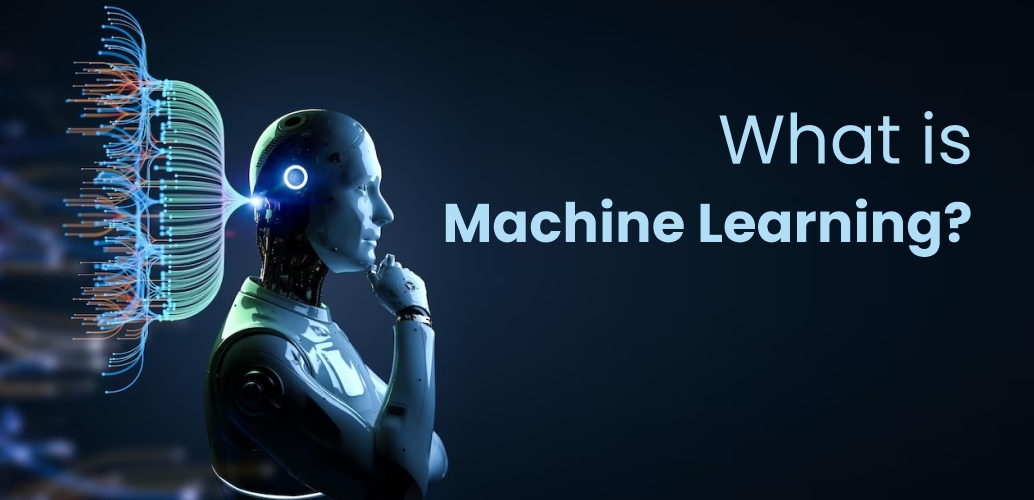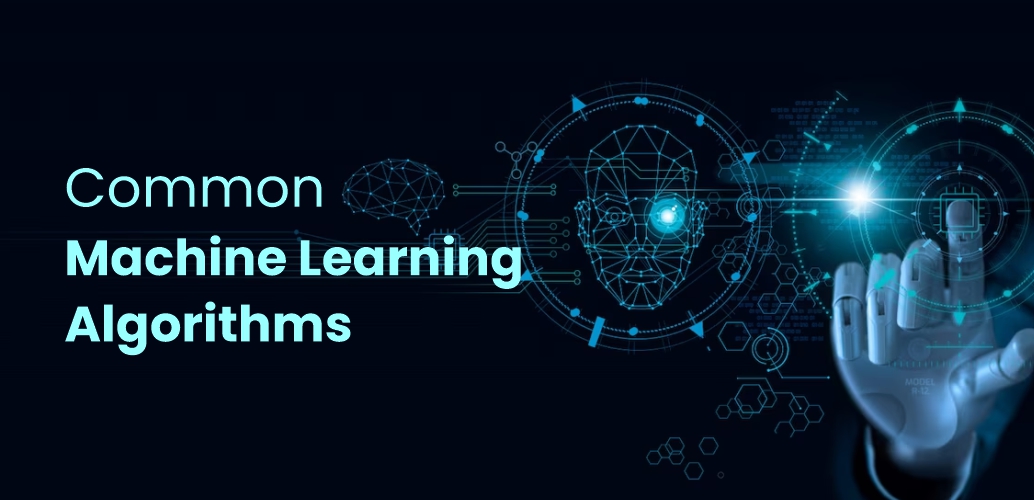Blog > Introduction to Machine Learning
Introduction to Machine Learning
January 31st, 2023

Table of Contents
- What is Machine Learning?
- How does Machine Learning work?
- Types of Machine Learning
- Common Machine Learning Algorithms
Traffic Alerts on Google Map, Netflix Recommendation Engine and now ChatGPT. These are just a few applications and uses of Machine Learning.
Whether you’ve noticed it or not, Machine Learning is becoming a part of our daily lives. And with every new intelligent application cropping up, it’s a good idea to know the importance of Machine Learning and the Machine Learning career opportunities available to you.
In this article, we are going to answer all your queries starting from the most fundamental one - What is Machine Learning?
What is Machine Learning?
As the name suggests, Machine Learning is the science of equipping machines (or computers) to learn on their own. The official Machine Learning definition is that it is a field of computer science that uses statistical techniques to give computer systems the ability to “learn” with data, without explicitly being programmed.
Now if you cannot explicitly program or tell a computer what it is supposed to do, then how does Machine Learning work?
How does Machine Learning work?
In one word? Data.
With Machine Learning techniques, you feed the computer system enough data so that it can pick on patterns and come up with meaningful insights.
(Side note: This reliance on data is what makes Data Science and Machine Learning related fields.)
Let us understand this with an example. Suppose you want to build a system that identifies whether a given animal is a dog or a cat. Here are the steps involved in the same:
Step 1) Define the problem: Your first step, like in any problem-solving case, is to define what the problem is. Our problem is to be able to distinguish between cats and dogs.
Step 2) Collect data: In this step, we will collect a large amount of images containing dogs and cats and label them appropriately.
Step 3) Prep the data: Next, we will process the images so that they are understandable by the system. For e.g., we could resize the images to be in the same dimension.
Step 4) Select a Machine Learning model: We will identify which Machine Learning model is best suited to our problems. For image classification, it is usually Convolutional Neural Networks (CNNs).
Step 5) Train the model: With the existing dataset, train the model to identify one set of images by tuning the parameters (e.g. if the image has 4 legs, 2 ears, 2 eyes, whiskers, it’s an animal).
Step 6) Evaluate the model: Feed the model another set of images to check for its accuracy.
Step 7) Fine-tune the model: Make further adjustments in the model to improve performance. For example, show the machine how to classify the different types of fur coats of dogs and cats.
Step 8) Make predictions: Test the model on completely, new unseen images and see if it has learnt enough to make predictions.
Step 9) Deploy the model: Integrate the model with a real-world application like an app or a website.
Step 10) Monitor and maintain: Continue to monitor the model functioning and make updates as needed.
Sounds simple enough right? But it needs the technical skills of a Machine Learning engineer to get this in place. And more importantly, there are variations in the above steps based on the type of Machine Learning model.
Types of Machine Learning
The three types of Machine Learning models are:
-
Supervised Machine Learning
Supervised learning algorithms are trained to make predictions on unseen data based on labelled data. Think of supervised learning as your 3rd standard teacher who shows you different charts to explain what things are. The image classification model that we explained above is a perfect example of supervised machine learning. -
Unsupervised Machine Learning
In unsupervised learning, the algorithms are trained to uncover patterns on unlabelled data. Think of an unsupervised machine learning model as exploring a new city without a map or a guide to help you. But only by recognising what seems familiar (like a restaurant), you can figure out the context of unfamiliar things. For example, in fraud detection, the algorithm views various transactions and groups them. Whenever an unexpected transaction is seen, it identifies it as an anomaly and flags it to your bank. -
Reinforcement Machine Learning
As the name suggests, reinforcement learning is all about positive and negative reinforcement or in other words - rewards and penalties. An example would be teaching a robot to play a game. Every time the robot makes a correct move, it wins points and every time it makes the wrong move, it loses points.
Common Machine Learning Algorithms

When you have to teach a machine learning model how to solve a problem, you don’t have to reinvent the wheel. There are already many machine learning algorithms that exist for the same.
Here is a small introduction to machine learning algorithms that are most widely used:
-
Neural Networks
A neural network is based on the way our brain works - in that, our brain’s final decision is based on the smaller decision of each neuron which gets passed to the next neuron, and so forth. For example, before we eat something, there is a neuron that checks if our stomach feels empty which passes this decision to the next neuron that decides if we want to eat or not and passes this decision to the next neuron that decides whether we want to eat an apple or not and so forth. Likewise, a neural network comprises a series of binary decision makers that come up with a consolidated output. A simple example would be a facial recognition system which looks at an image, divides it into many pixels and considers every pixel match before it finally decides whether the face matches the image or not. -
Linear Regression
Linear regression algorithm tries to determine a relationship between two entities in order to make predictions. For example, let us say a publisher wants to understand whether or not to invest in a sequel of a book. The publisher will use a linear regression algorithm to see how the sales have been of the same author’s previous novels, and based on that the possible sales of the next novel. -
Logistic Regression
Similar to linear regression in that logistic regression is also used in making predictions, but the outputs are binary - a plain yes/no. The simplest example would be for banking systems to understand if a person is likely to pay their loans based on their credit history and the payment history of other customers with similar characteristics. Based on the outcome, the bank will approve or reject the loan. -
Clustering
As the name suggests, clustering analyses various data points to find commonalities and groups entities together. A simple example would be for a store to go through the purchase history, age, gender and other characteristics of their customers, and come up with new customer segments. -
Decision Trees
Decision Trees mimic human thinking by dividing a major decision into a series of tiny decisions. For example, let us say there is an automated game in which there is a non-playable character (NPC) that is controlled by the computer. Now this NPC may decide to shoot an actual player or not and may consider several factors. Does it have enough ammunition? Will it alert other players of its location? Based on these decisions, the final decision will be taken.
Conclusion

With these Machine Learning examples, we hope it is clear that the applications of Machine Learning are plenty and only growing further. You can start your career in this lucrative field by taking a Machine Learning course online. But make sure to take a course that gives you sufficient hands-on experience so that you can build Machine learning models for real-world problems.
Which Machine Learning algorithm or example fascinates you the most? Let us know in the comments below.






Add a Comment